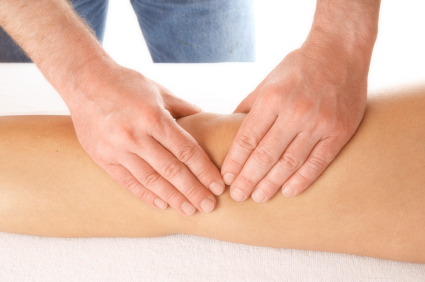An unintended consequence of the increase in sports participation by girls and young women over the past thirty years has been an extraordinary rise in the incidence of anterior cruciate ligament (ACL) injuries in young female athletes. At the college level, one in ten young female athletes participating in sports such as soccer, volleyball, and basketball will suffer an ACL tear injury. These girls are typically unable to practice or compete for one or more seasons and face potential loss of scholarship funding and significant psychological trauma. A widely cited 1985 study found that at the high school level, the knee injury rate among female athletes is one per 100 participants, and noted the need for preventative measures.
In 1983, sports medicine researchers determined that four-fifths of ACL injuries are non-contact injuries, that is, they are caused by the athlete’s own motions rather than collisions with other players. To the researchers, this finding meant that the high incidence of ACL tear injuries in young female athletes might be greatly reduced if those motions could be identified and avoided.
The ACL is one of four major ligaments that connect the upper and lower leg at the knee. The ACL provides joint stability and supports cutting and pivoting motions. Oftentimes, the ACL will tear with a “pop” that can be heard by spectators and other players. Pain and immediate swelling follow. ACL tears require surgical reconstruction using tendon grafts from other areas of the knee or from cadavers, followed by a long period of rehabilitation.
The frequency and seriousness of ACL tears in young female athletes has led to research studies aimed at understanding the problem. These studies are now yielding valuable data. Three major hypotheses to account for the higher number of ACL tears in female athletes versus male athletes have been examined: hormonal differences causing laxity of the female athlete’s ACL, a smaller and more narrow space within the knee for the female athlete’s ACL, and sex-based differences in lower extremity strength and coordination. The last of these three hypotheses is receiving the most scientific support from study data.
Certain aspects of lower extremity strength and coordination can be captured and measured by videotaping athletes while they perform athletic movements in the research lab. While video recordings do not capture complex three-dimensional movements and the rotational stresses that these movements place upon the knees, the recordings do enable researchers to make close measurements of joint and limb positions in a single plane. These measurements were found to have predictive value.
In one well-designed study of 205 young female athletes, researchers found that athletes with a specific way of posturing their lower extremities, known as “valgus” (or “knock-kneed”) alignment, during certain athletic movements were more likely to suffer ACL injury than athletes with more “neutral” or straighter lower extremity alignment. This valgus alignment can be seen by analyzing the angles formed between the ankles, knees, and hips when the athlete lands from a jump off a small box and when she jumps vertically from a crouched position. A separate study that included videographic analysis of 325 young female athletes showed that a six-week neuromuscular training program corrected the lower limb valgus alignment associated with injury during jump landing and takeoff.
It is already well-known to physical therapists that muscular strength stabilizes the knee by helping to maintain the correct relative positions of knee structures during sports movements and by allowing muscles in the legs to absorb forces that would otherwise subject the joint to potential injury. But physical therapists treating young female athletes must now consider the implications of the new studies. Physical therapists familiar with these studies infer that rehabilitation from ACL injury should, in addition to conventional strength training treatment methods, include specific neuromuscular training aimed at improving the athlete’s ability to avoid valgus alignment of the lower extremities during high-risk sports.
It is no longer acceptable to reconstruct the ACL but leave neuromuscular control deficient.
The jump strength training program at Physical Therapy of Los Gatos is an element of rehabilitation from surgical reconstruction of the ACL as well as a standalone performance improvement module. The program includes jump analysis, strength conditioning, and neuromuscular training designed to improve power and acceleration. The neuromuscular training methods employed include visual, auditory and proprioceptive cues to train athletes to use muscular strength to absorb jump impacts in a controlled fashion, and, if necessary, to correct jumping, landing, and pivoting techniques in order to avoid forces associated with injury. For additional information about prevention of ACL injury, rehabilitation from surgical ACL repair, and jump strength performance training for athletes, please call Physical Therapy of Los Gatos at (408) 358-6505.

Comments on this entry are closed.